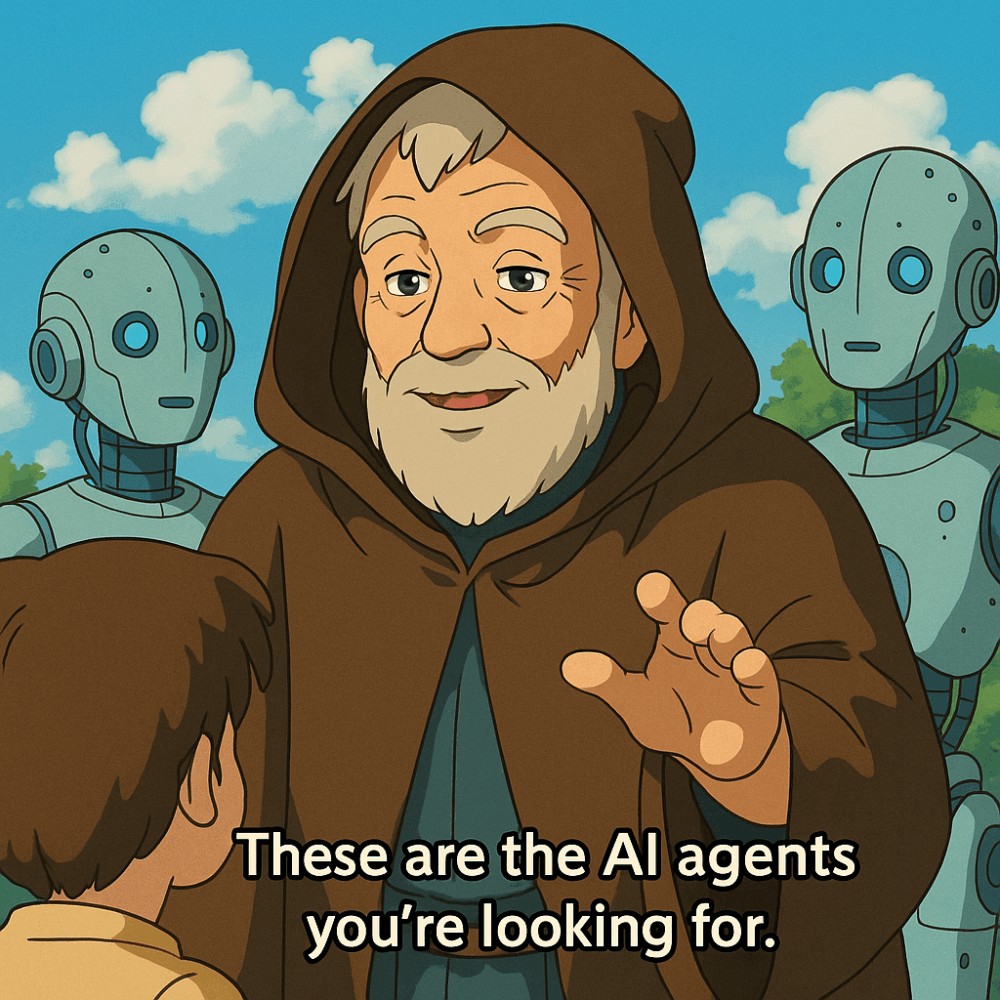People often underestimate that today’s “AI summaries” in search are only the gateway to a far deeper change: shopping and service management that will be handled for us by highly autonomous software (AI agents). This will trigger another major shift in the economy and the way the internet works. Let’s look at the various consequences this could bring.
Audio version of the article
Recording length: 11 minutes
A popular topic is how this will wipe out whole industries. Yet none of it spells the end of advertising or UX—rather, their move into less visible layers. A wave of change is coming, and anyone who wants to survive must adapt.
Autonomous agents won’t kill advertising—they’ll just hide it in the API
- Programmatic advertising will move from banners to the product feed. Manufacturers and retailers will pay for priority placement in the data feeds the agent draws from. Cost-per-conversion will replace today’s CPM/CPC.
- Remarketing will become a B2B game: advertisers will target “AI-agent profiles,” i.e., the data tokens an agent presents when making a request (similar to Amazon Vendor Central today).
- The platforms’ incentives stay the same. Google, Amazon, and Apple live off advertising/partner revenue; they’ll just shift monetisation into the layer seen by the agent, not the human.
Shop-UX won’t vanish—it will move toward CX
- The agent mirrors the user’s experience. Poor shipping, warranty hassles, or bad packaging will translate into penalties in its model.
- The post-purchase phase is crucial. Returns, accessible support, or a transparent carbon footprint are metrics the agent can quantify.
- Emotional purchases will stay manual. A car, luxury watch, or Bali holiday still need personal viewing, the thrill of selection, and a feeling of control.
Bypassing platforms, the fight for data, and the rise of universal agents
- Platforms vs. agents: the battle for the “last mile.” SaaS providers and marketplaces (Amazon, Airbnb, Salesforce…) fear that an AI agent will become a superior layer, stripping them of their monopoly on recommendations, pricing tweaks, and direct customer relationships—a phenomenon often called disintermediation.
- Data control as the key weapon. Sites can restrict agent access or lock down their APIs, risking that the agent redirects traffic to a cooperative competitor. We’ve seen similar tension when Google let Bing train on its interface or when new models (DeepSeek) mimic stronger LLMs via public APIs.
- Demand for a universal agent. Users want a single “digital manager” that understands both personal and work life (Workday, Slack, Jira, GitHub…). Corporate security resists, but consumer pressure for convenience is slowly eroding the barrier.
- A new rev-share economy. Just as Google AdSense took a slice of ad spend, agents (e.g., OpenAI) could demand a revenue share from Airbnb bookings or Amazon purchases. If a platform refuses, the agent can recommend an alternative.
- Optimising for AI instead of SEO. Companies will wrestle with getting into agents’ training data and inference memory. On the horizon: attempts to manipulate AI models for higher recommendation rates—and counter-moves in the form of robust guard rails.
- A security layer and guard rails. A hacked agent could spread disinformation or order unwanted services. Firms will deploy conversation monitoring, mandatory sandboxes, and topic limits within which an agent may operate.
Regulation & standards: both brake and opportunity
- EU AI Act (full effect 2026–27) introduces mandatory audit trails and explainability. Agents must offer a “right-to-override” so a human can change any decision at any time.
- Shared data schema (e.g., Open Product Graph, GS1 Digital Link) is essential for agent interoperability across ecosystems.
- Edge AI and data sovereignty: sensitive preferences will be stored locally; the cloud will receive only aggregated data.
What the internet could look like in 2035
| Area | Short outlook (≈ 10 years) |
|---|---|
| Search | Zero-click answers + a machine-readable layer for agents. SEO evolves into AIO (Agent Interaction Optimisation). |
| Advertising | Hidden inside paid feeds, licensing deals, and preferential SLAs between producer and platform. Video and influencer marketing grow as inputs for agent preferences. |
| E-commerce front-end | Disappears for routine buys; for experiential buys it becomes an AR/VR showroom. |
| Content & community | Focus on live events, authenticity, and a digital proof-of-origin signature. |
| Security & ethics | Auditable decision logs, regulatory sandboxes, and mandatory “nutrition labels” on models. |
What to do today
- Start thinking about an AI-agent strategy.
- Structured data catalogue — switch to schema.org/GS1. Prepare a public API that AI agents can easily read.
- Brand experience — build community, live commerce, and trust; they influence the agent’s weighting factors.
- Transparent AI interface — offer audit logs and SLAs, or B2B partners will walk away to a competitor.
Conclusion
Advertising, UX, and hard sales won’t disappear—they’ll just move from the visible front-end into the quiet layer where robots talk to one another. Whoever starts optimising data and experience now won’t get lost in the new economy. Will it steal most of your traffic tomorrow? No. But in a few years it will represent a significant slice of your revenue or costs if you run a website.
Where do you see the internet in ten years?
